
 |
|
|
#1 |
|
Member
Join Date: Jun 2006
Posts: 161
|
The two cannons shown in the slideshow are about 20 in. long and weigh about 20 lbs. One is a bit lighter and slimmer than the other. Peter Seest was the head of the Amsterdam town foundry when these were cast. One of his biggest customers was the Dutch East India Company. As far as I know he didn't cast any full-sized cannons for the VOC in 1761, because none have been found with that date. He was very busy from 1764 on because many cannons of his with such dates on them are known. In fact I'm guessing many dozens of bronze swivels with his name survive, so his total output may have been many hundreds or more. VOC used swivels of 1/2, 3/4, and 1 pounder caliber but I haven't checked to see if Seest cast all 3 sizes or not.
These two, as far as I can tell, are the only known cannon models by Peter Seest. The "ownership" mark is normally on the breech of the gun, and these have an "OH" monogram in that area. My research on the VOC revealed that their headquarters was a large building in Amsterdam known as the East India House, or in Dutch something like "Ostindische Huis." The "OH" monogram on the breech apparently indicates that these cannons were once the property of the VOC headquarters. Seest may have cast them as salesman's samples to give te VOC officials various models to choose from, but I'm only guessing now. I don't know why the heavier model (marked B in the data table in the slideshow) has the Amsterdam town mark (proofmark) on the breech and the lighter one does not. Use password "attack" to view slideshow. http://s17.photobucket.com/albums/b6...view=slideshow |
|
|

|
|
|
#2 |
|
(deceased)
Join Date: Dec 2004
Location: Portugal
Posts: 9,694
|
Photobucket stuff non adviced in this forum.
Please edit thread soonnest possible, by replacing the Web host with direct pictures upload. Thanks. |
|
|

|
|
|
#3 |
|
Member
Join Date: Jun 2006
Posts: 161
|
Will do. My photohost is not functioning correctly now but will check periodically and post the photos as soon as that site is working again.
|
|
|

|
|
|
#4 |
|
Member
Join Date: Jun 2006
Posts: 161
|
Found it was operator (me) error! A detailed chart of dimensions and weights follows the ten (10) model photos.
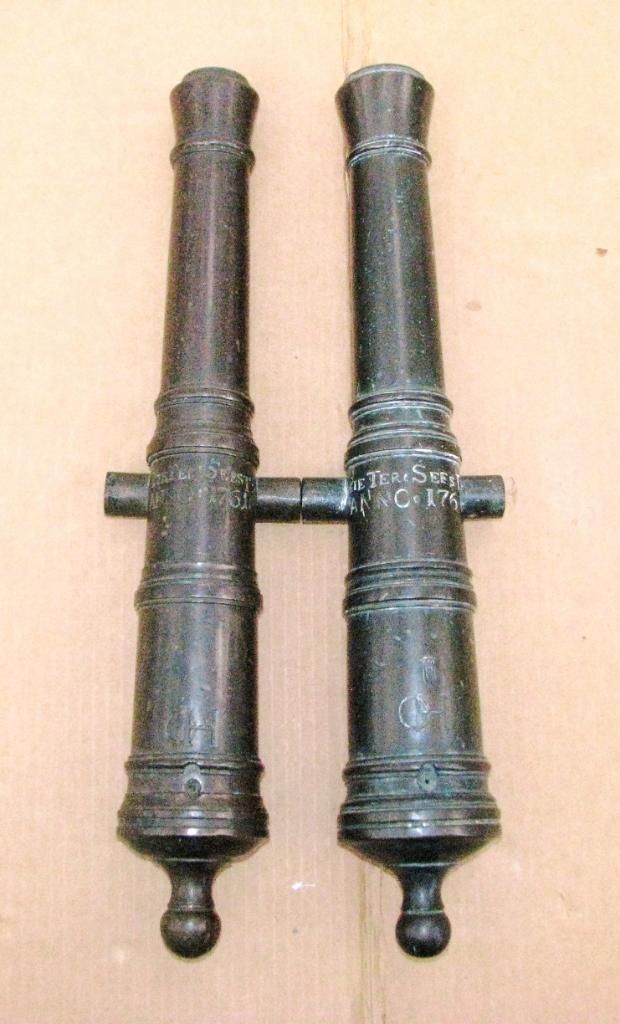 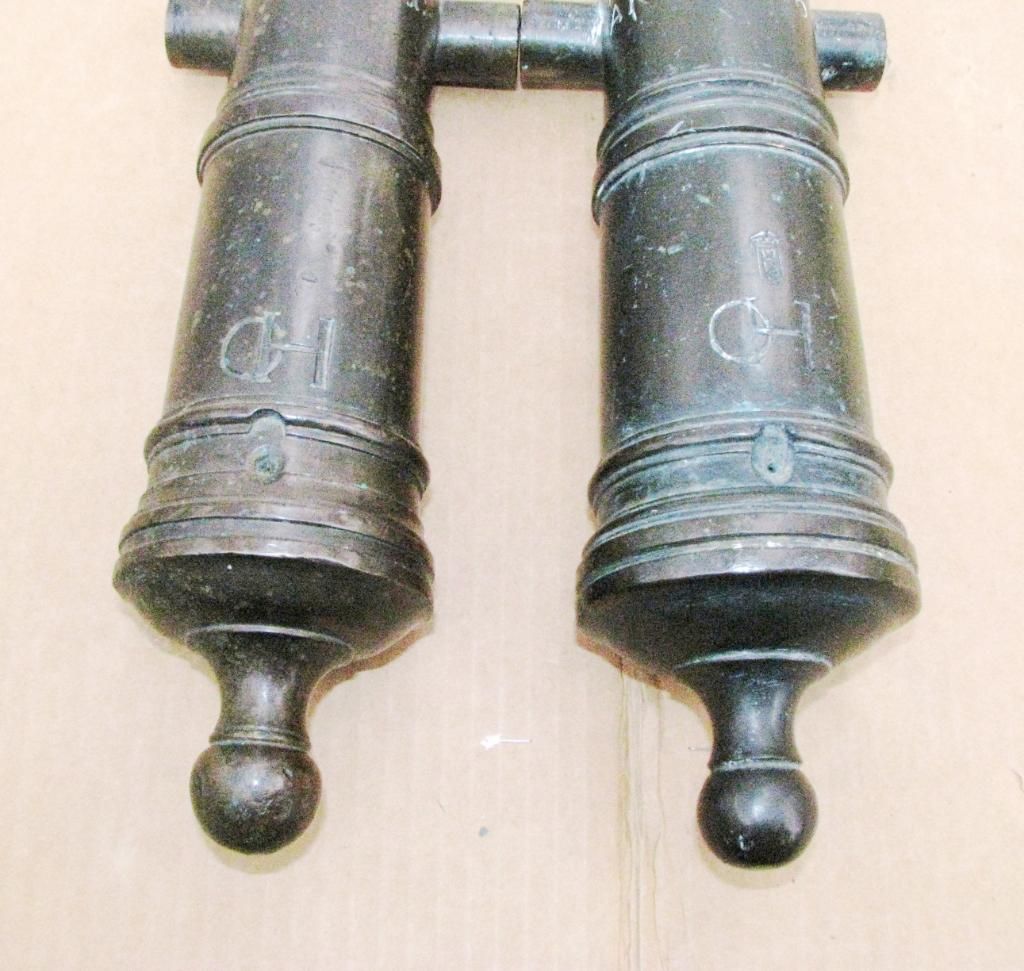  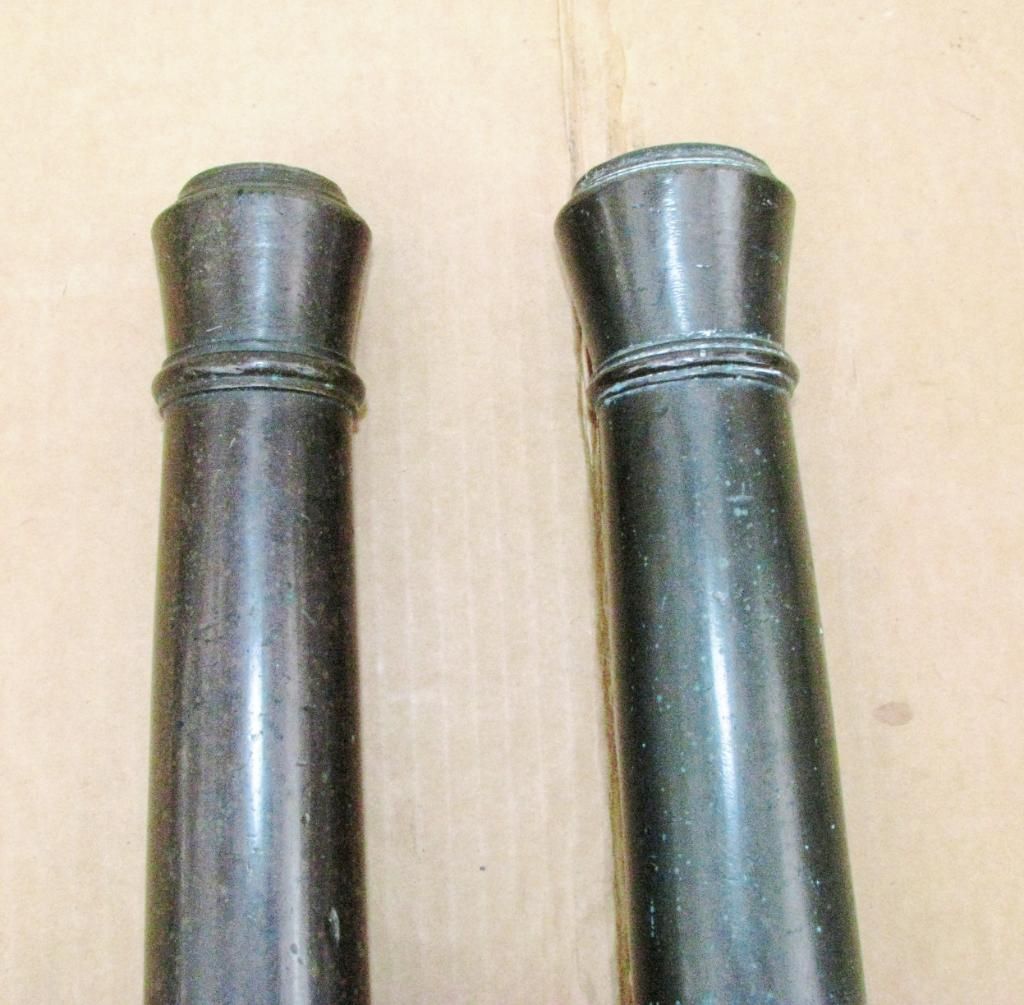 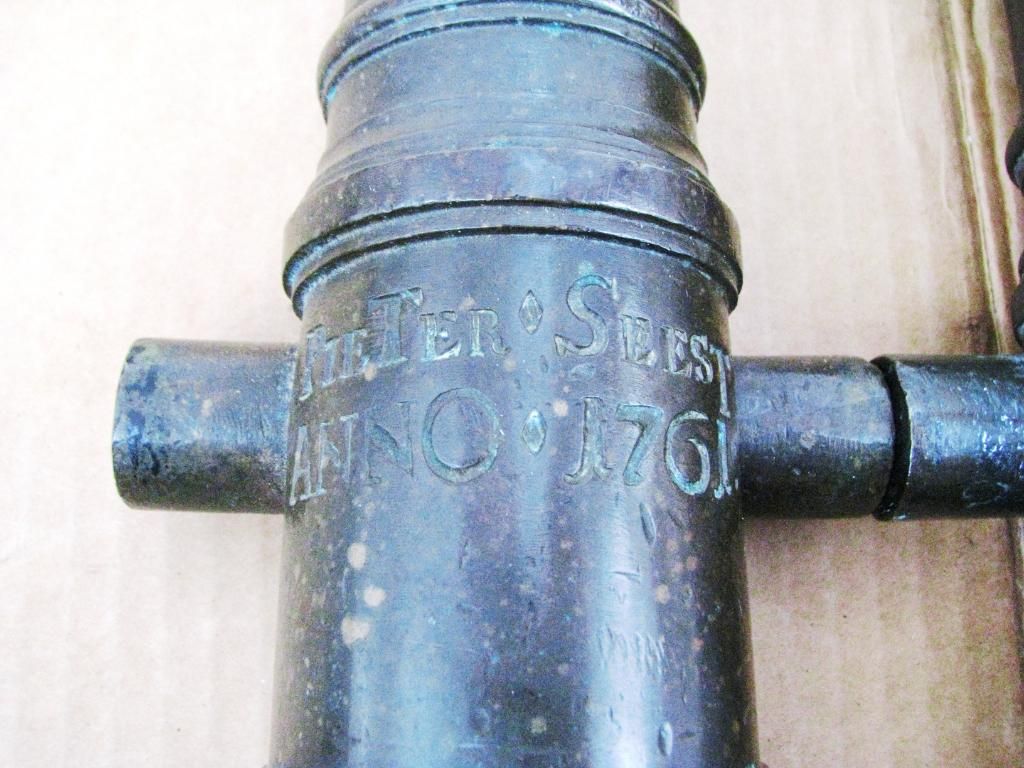
Last edited by cannonmn; 15th January 2012 at 07:02 PM. |
|
|

|
|
|
#5 |
|
(deceased)
Join Date: Dec 2004
Location: Portugal
Posts: 9,694
|
Well done

|
|
|

|
|
|
#6 |
|
Member
Join Date: Jun 2006
Posts: 161
|
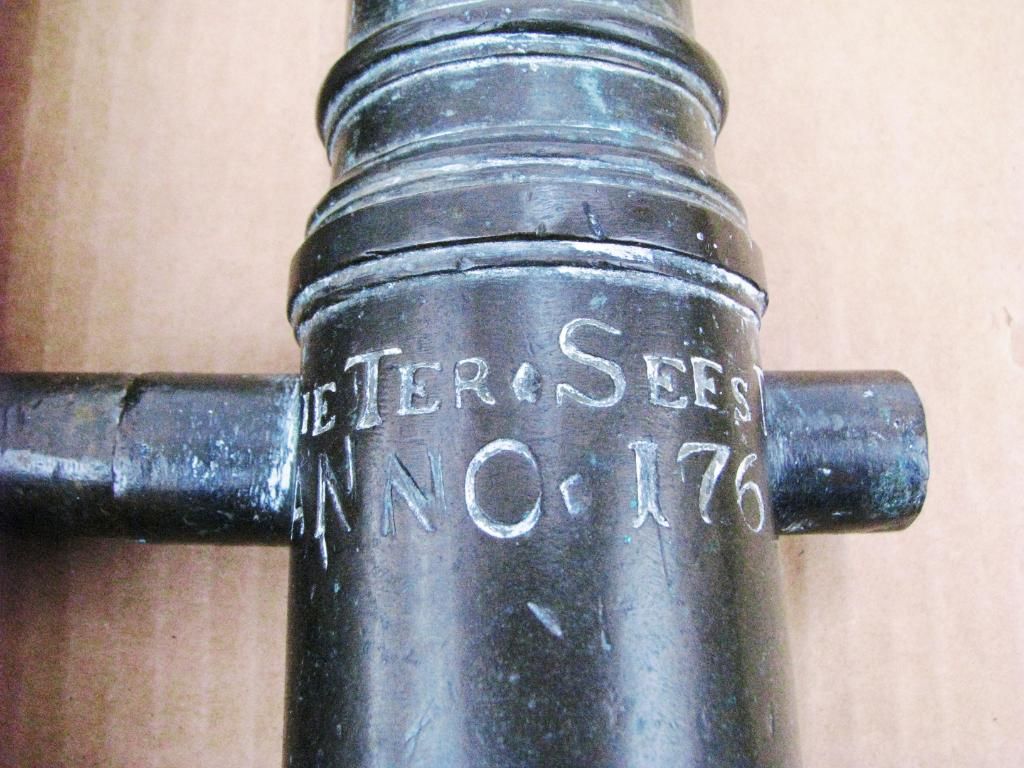 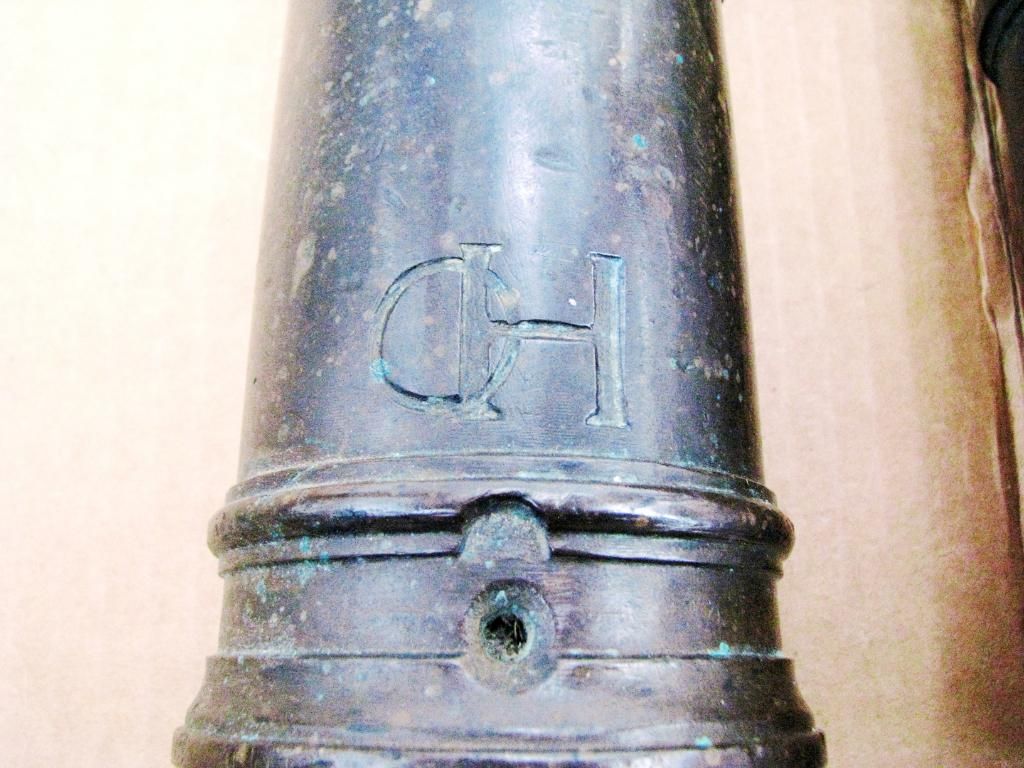 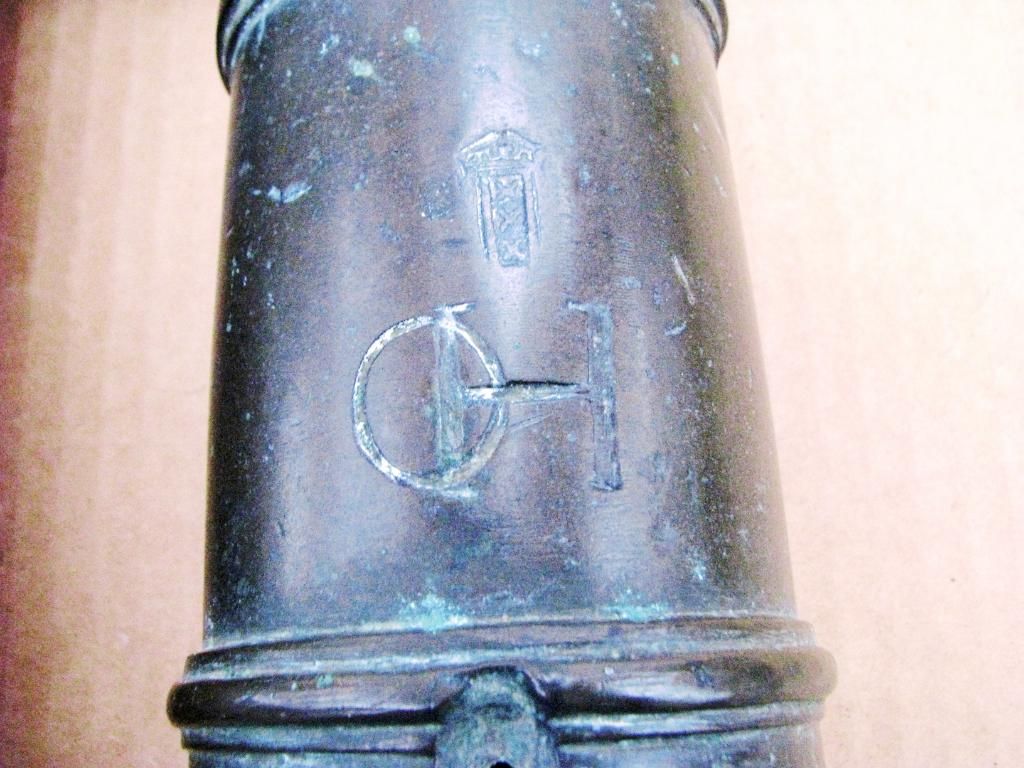 Model "A"  Model "B"  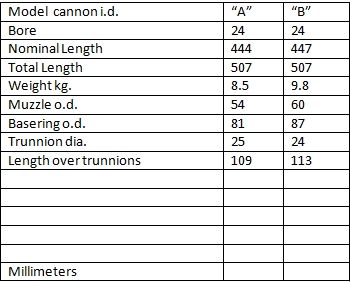
|
|
|

|
|
|
#7 |
|
Member
Join Date: Jun 2006
Posts: 161
|
The best book in existence on Dutch cannons (perhaps one of the only ones?) is THE VISSER COLLECTION by Rudi Roth. The late Henk Visser was a hugely wealthy arms dealer from the Netherlands who accumulated one of the world's largest private arms collections, including cannons. He preferred Dutch cannons, and one purchase from I think Indonesia, he got a warehouse full of VOC ordnance, I think over 100 pieces, mostly various sizes of swivel guns. The book depicts all of the non-duplicate Dutch cannons and lists the remainder, with detailed tabulations of measurements, etc. Roth has further classified them by type and subtype, much of which it appears he had to reconstruct from archival documents. I think due to his book, Dutch ordnance has gone from being "least understood" of the world's ordnance to now among the best understood. Roth is a talented draftsman and included in the book full-page, fully-dimensioned drawings of each non-duplicate cannon in the Visser collection.
-------------------------------- The Visser Collection: Ordnance: cannon, mortars, swivel-guns, muzzle- and breech-loaders Volume 2 of The Visser Collection: Arms of the Netherlands in the Collection of H.L. Visser, J. P. Puype Authors J. P. Puype, R. Roth Publisher Waanders Publishers, 1996 ISBN 9040098816, 9789040098819 Last edited by cannonmn; 15th January 2012 at 10:21 PM. |
|
|

|
|
|
#8 |
|
Member
Join Date: Jun 2006
Posts: 161
|
If I had all the time and money in the world I'd certainly go to the extensive VOC archives with a hired translator who specialized in "Old Dutch" and see what I could find in the section indexed by the finding aids line I:1:4 http://www.tanap.net/content/voc/fin..._inventory.htm
|
|
|

|
|
|
#9 |
|
Member
Join Date: Mar 2009
Posts: 1,064
|
Of the person Pieter Seest are not many details preserved. Seest had
registered in the city of Amsterdam and was married. He got work in, the since 1614 existing guns and bell foundry on the corner of de Karthuizerstraat en de Baangracht. Much later he became director of the foundry. This can be read in a number of official pieces. But what do they tell about the person Pieter Seest? We read that he is Born in Holstein, northern Germany, in 1716. He came as a foreigner to Amsterdam, one of the richest cities. In itself nothing special. His predecessors in the foundry were almost all foreigners; from 1681 to 1699 Claude Fremy from a Lotharingen family, from 1699 to 1715 Claes Noorden, also from the city Holstein and Jan Albert de Graven of Celle in West Germany from 1699 to 1729. Between 1730 and 1734 was Nicolaus Muller the founder master, a man with a real German name. The direct predecessor of Pieter Seest was the famous and prolific caster Cyprianus Crans. About 1750 Pieter entered the service with him. Because there was peacetime a lot of church bells were cast. But the East India Company (VOC) was a constant customer of mainly light artillery. Orders for big guns came mainly from Portugal. So there are still big guns of the Crans Artillery in the Army Museum in Lisbon and on the old ramparts of Tanger. Pieter must have worked on this piece. When Cyprianus died in 1755 he became the master caster. The Amsterdam Chamber of the VOC should have had faith in Peter, because orders continued to come in light artillery. In the collection of the 2006 deceased gun collector H. L. Visser Wassenaar were not less than eighteen small guns (Most halfponders) of Seest, all cast for the VOC. Seest also has many church bells cast, of which several exist today. Unfortunately claimed the Germans in World War II many church bells. These were melted for the war industry. Maybe the last product of a Seest cast was a mortar. This piece is on the walls of the Moroccan city of Essaouira. According to legend, it is cast by Pieter Seest and sons in 1782. He has started already in 1781 and then deceased. His sons Christiaan and Jan must have completed the piece, because in 1781 they took control over the foundry. (translated from het bronzen kanon van de kleine werf/ Nico Brinck) picture of Oost indisch huis Amsterdam. Last edited by cornelistromp; 16th January 2012 at 07:58 PM. |
|
|

|
|
|
#10 |
|
Member
Join Date: Jun 2006
Posts: 161
|
Cornelis, thanks, good information there. I had not seen that view of Ost Ind. Huis before anywhere. I will have to look up the book you mention, I had not heard of it before, my only Dutch cannon book is the Visser collection. Yet I have cannons by Ouderogge and Overney in addition to those of Seest so I like to learn of any sources available on Dutch cannons.
I have some information about Cornelis Ouderogge which has now been put on the web (the family etc. in Rotterdam) but I've found precious little information on Petrus Ouderogge of Leeuwarden. Do you have any suggestions there? I have one of the falcons dated 1681, once owned by Count Innhausen und Knyphausen (not complete name, I have forgotten some of this.) He lived at Nienoord, where the Dutch National Coach Museum is now. I think two of the Overney cannons are still at that place. |
|
|

|
|
|
#11 |
|
Member
Join Date: Mar 2009
Posts: 1,064
|
there is no Petrus Ouderogge known, I think you mean Petrus overney.
Peter Overney, from Suawoude, Leeuwarden was active in the period 1670-1711, more than forty years accordingly. In 1671 he married the widow of the bell and cannon founder Jurrien Balthasar whose successor he was. Even when he became a citizen of Leeuwarden. The same year he received from the States of Friesland the exclusive right to cast exclusively clocks, and guns in that province. this right was repeated in 1685. Overney was a prolific bell founder, although he, apparently, has made only clocks in the provinces of Friesland and Groningen. re: founder Ouderogge this was a family of founders. jan corneliszoon 1573-1625 cornelis 1599-1672 and brother Dirk 1600-1645 and the son of Cornelis Johannes 1640-??. which person of the Ouderogge's family are you looking for, is your Ouderogge cannon dated? (so if your cannon is dated 1681 is must have been made by Johannes ouderogge!) best, |
|
|

|
|
|
#12 | |
|
Member
Join Date: Jun 2006
Posts: 161
|
Quote:
The Ouderogge falcon is dated 1681. There are a pair of Cornelis Ouderogge (large swivel guns?) with dolphins dated 1654. I have always been interested in how these guns would have been mounted originally. Were they used as ship's swivel guns, small carriage guns, or what? The cartouche is blank, so I guess we can rule out any use by the VOC. Any comment on how these may have been used would be welcome. They are as i recall about three feet long and one weighs 107 and the other 109 Amsterdam (?) pounds. 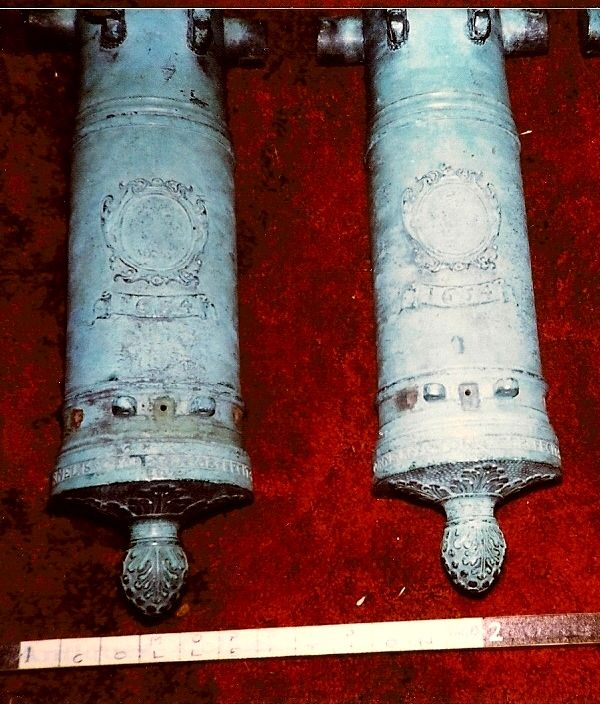 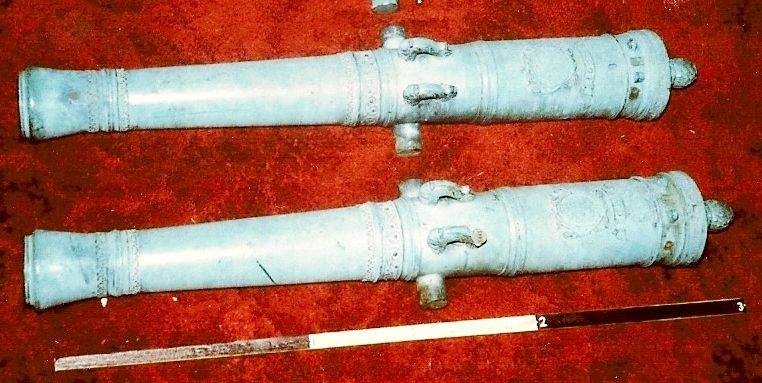 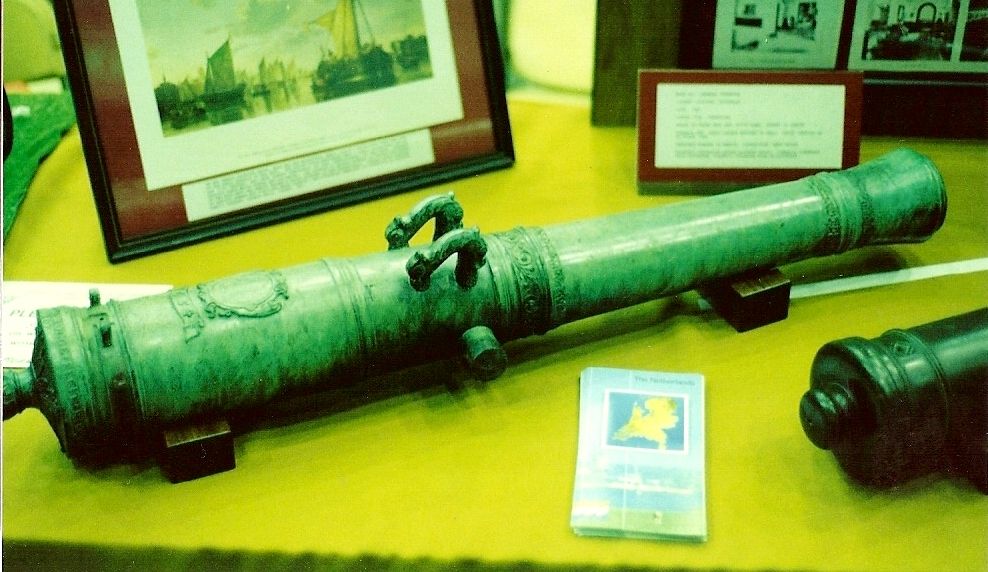  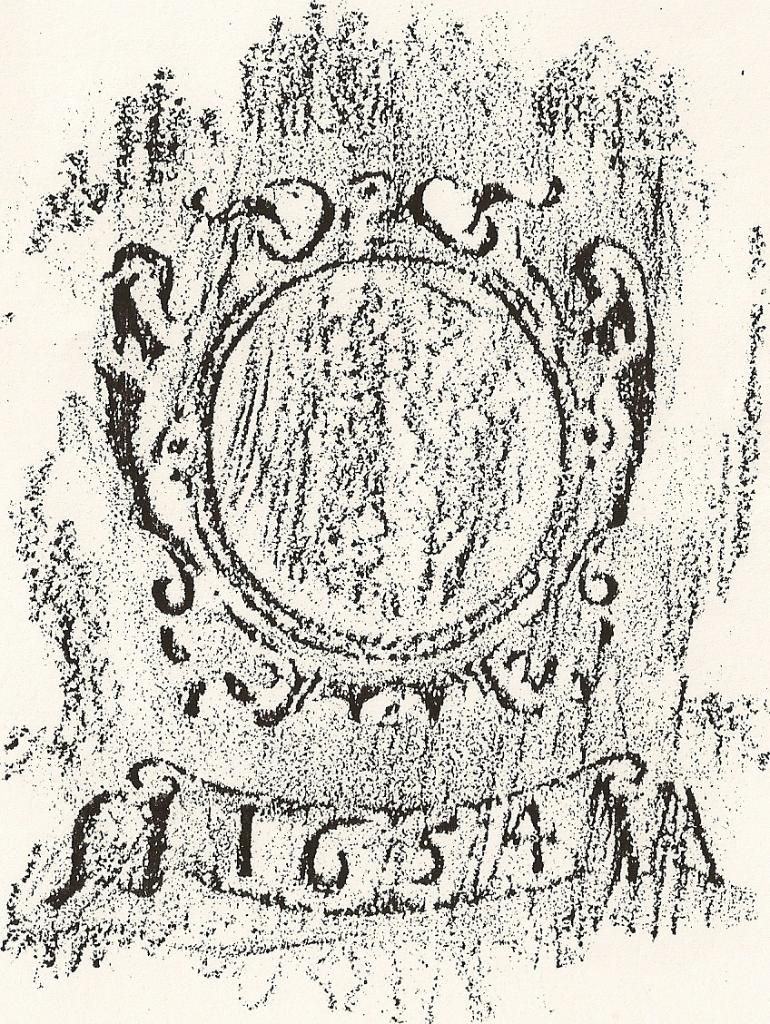
Last edited by cannonmn; 19th January 2012 at 09:31 PM. |
|
|
|

|
|
|
#13 |
|
Member
Join Date: Mar 2009
Posts: 1,064
|
They may have been mounted on a carriage on a ship, but more likely is that they have served as a model cannon/ a sample for the sale or production of a larger one.
best, Last edited by cornelistromp; 20th January 2012 at 05:17 PM. |
|
|

|
|
|
#14 |
|
Member
Join Date: Jun 2006
Posts: 161
|
Cornelis, thanks again. I have not seen any Dutch cannons as large as the 1654 pair which I could verify were models. The models I see are much smaller than these, with the "1761" Seest pair being some of the largest ones I thought were actually models. However since we do not have documentation on what was done for what purpose, many questions will remain open.
The small piece on the little wooden ship carriage you showed in response no. 13: I have a pair that closely resemble it, even down to the banner with the year date on it, but of course the coat of arms differs. I think the "displayed eagle" coat of arms on mine is too generic to trace it to any family. I tried however there are hundreds of them in the armorials, from many countries, Netherlands, Italy, Germany, etc. However I'd be quite interested if some day the maker of these pieces could be ascertained. Mine are not marked with any maker but have some local commerce-type marks stamped into the underside. Since these are much larger than proofmarks for arms, I have decided they are probably local government inspection marks normally used for scale weights etc., and were used to indicate proof of these small cannons once proof-testing laws came into effect for even saluting cannons. I am sure the carriages are later than the barrels. Sorry the photos are grainy, the camera seems to have been mis-adjusted. These small cannons are about 28" long as I recall. Underneath they have small roman numerals II and IIII as I recall, so there must have been a set of at least four. I saw that Roth has written a page on the small or model or family cannons in his book on the Visser Collection. 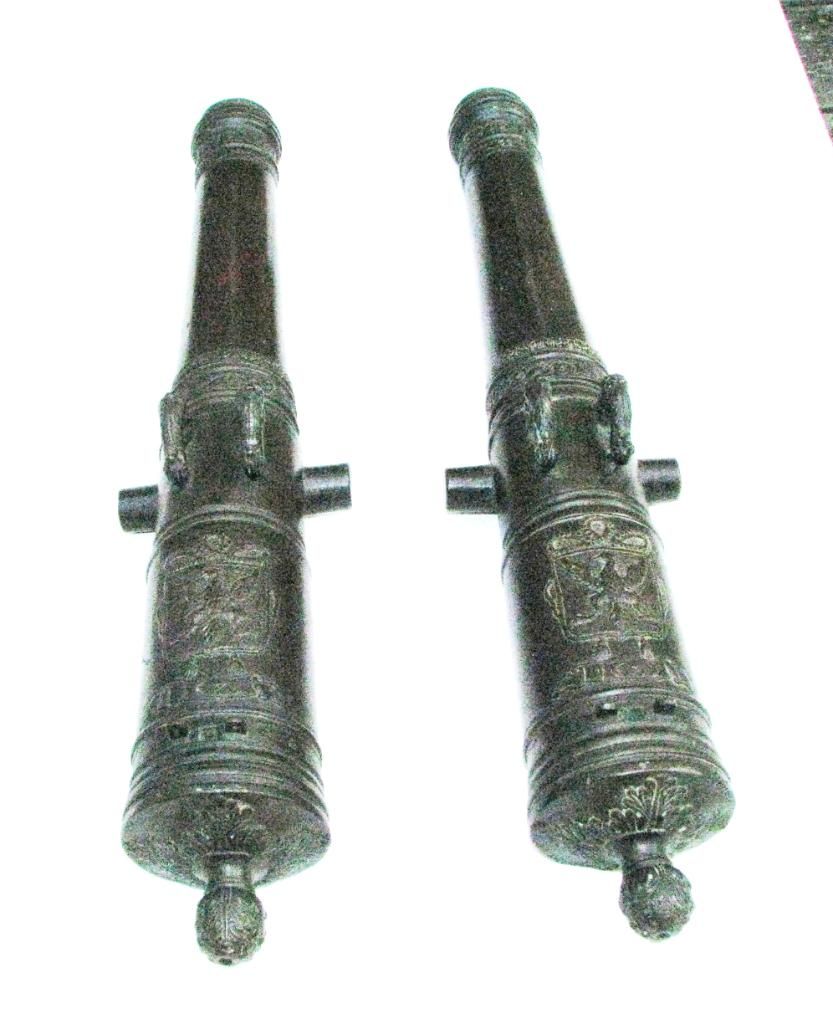 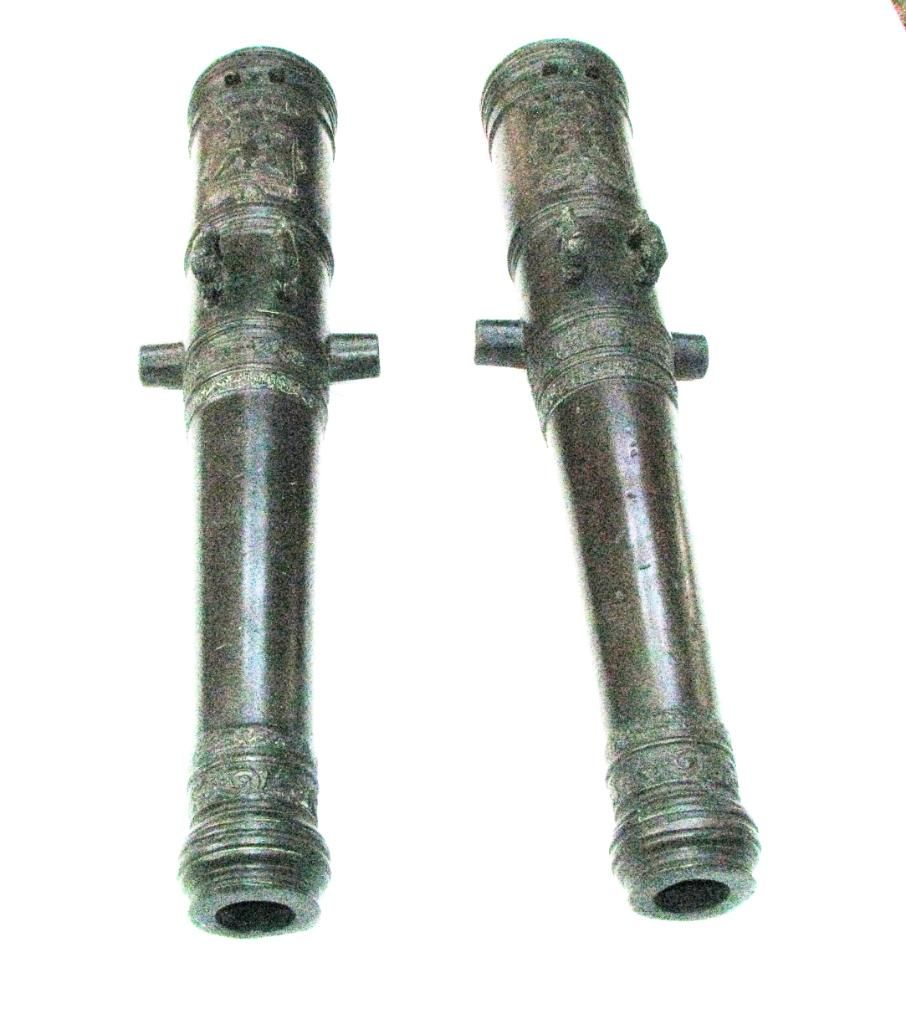 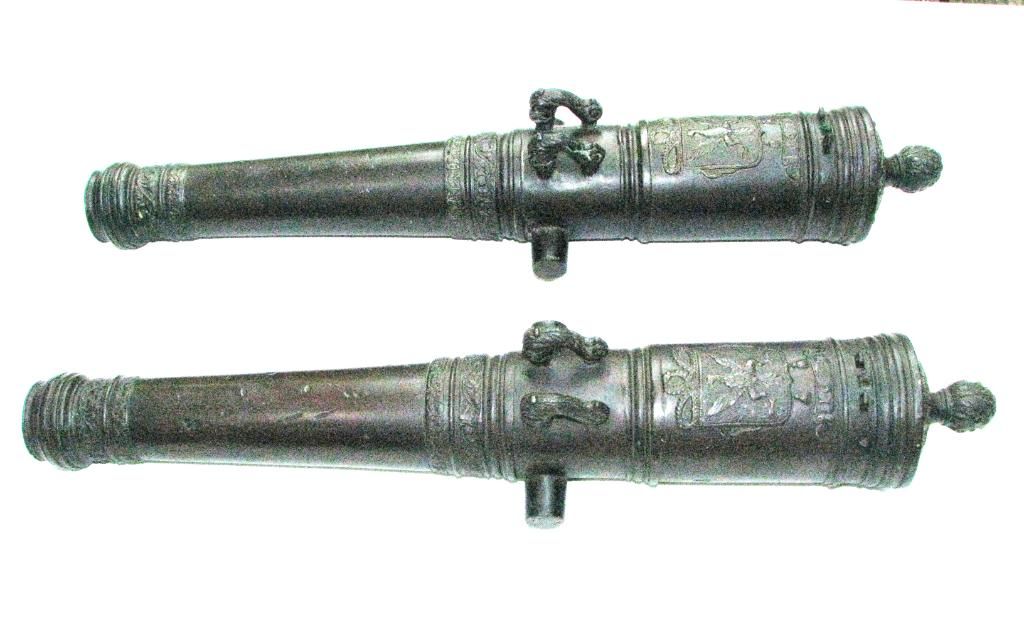 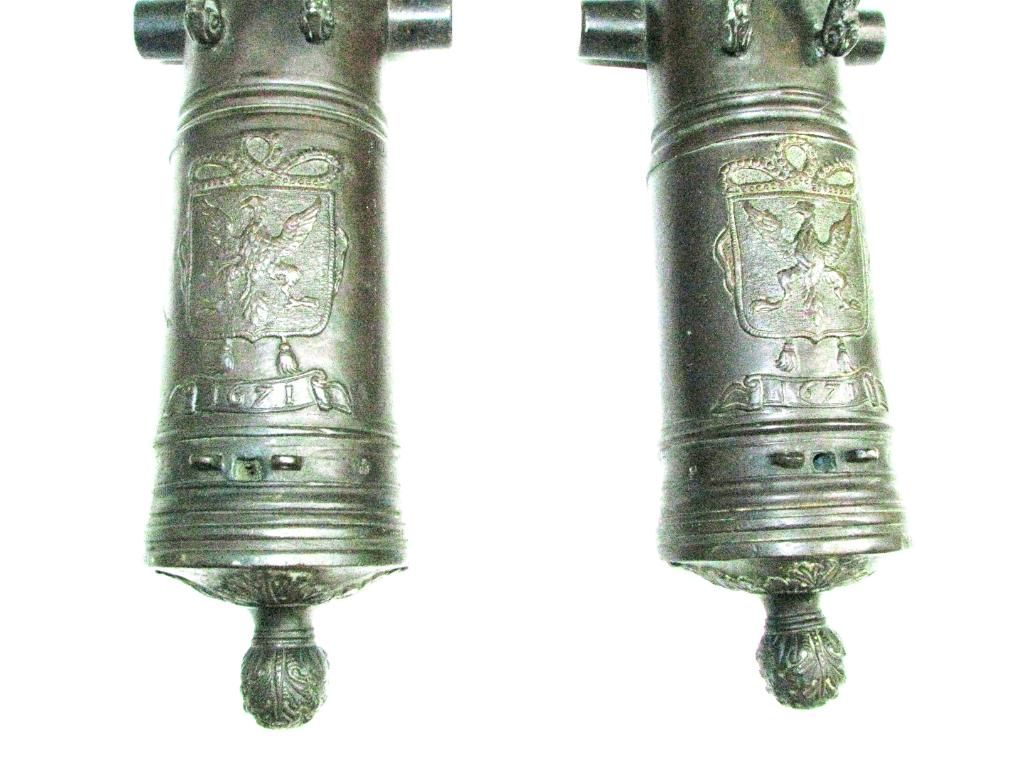 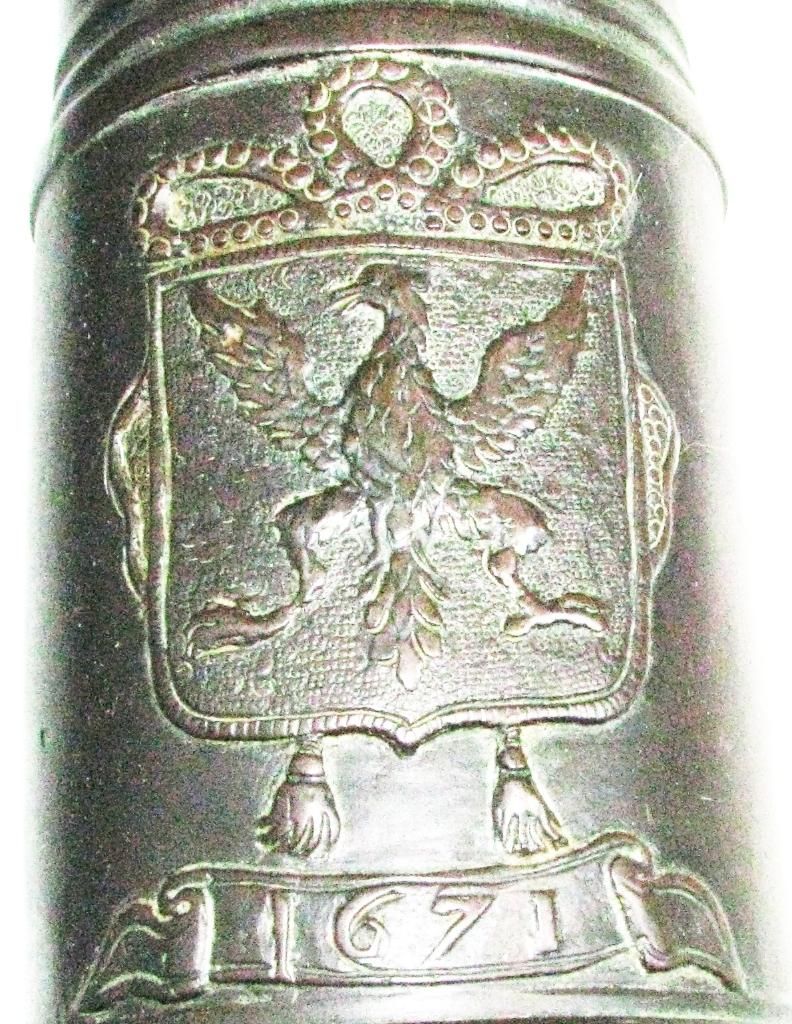 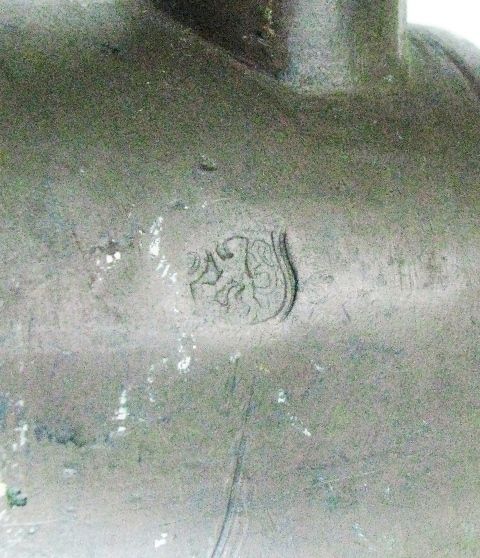
|
|
|

|
|
|
#15 |
|
Member
Join Date: Mar 2009
Posts: 1,064
|
what a beautiful couple!
the canon of post 13 is made by Cornelis ouderogge in 1649 and is in the Rijksmuseum in Amsterdam. There are so many similarities that it is certainly possible that the couple is made by cornelis Ouderogge as well. There is not much known about these small cannons, were they merely used as signal guns ? I do not know. More likely is that they were gifts given to a commander after some great victory or made as a prototype for a bigger cannon by the foundry in oder to get a large order. I have a few small cannons in my collection, of course not so beautiful as the ones you have posted  I will try to post some pictures later. I will try to post some pictures later.best, Last edited by cornelistromp; 21st January 2012 at 03:27 PM. |
|
|

|
|
|
#16 |
|
Member
Join Date: Jun 2006
Posts: 161
|
Cornelis, thanks again. I was still curious so I went to the Rijks.M. site and locted their page on the cannon you so kindly posted, and pasted it below here for anyone's reference.
Then I did of course the natural thing and hurried off to measure mine to see if they matched that example in the Rijks.M. My pair have barrels of total length 63 cm, same as the museum example. The bores on mine are 3.1 cm caliber/diameter, and that in the museum is 2.8 cm, so either mine enlarged from firing or Ouderogge simply bored them a bit larger, but the overall details match precisely so I can now be sure mine are also Ouderogge pieces, at least "by attribution." I have only been trying to figure out for the past 29 years who cast my pair of guns, so thanks very much for solving that problem for me! --------------------- Identificatie / Vervaardiging Fysieke kenmerken Opschriften / merken Verwerving Identificatie / VervaardigingIdentificatie / Vervaardiging Collectie wapens / militaria Objectnummer NG-NM-9803-A Titel(s) Model van een bronzen kanonVervaardiger bronsgieter: Cornelis Ouderogge (.... - 1672) plaats vervaardiging: Rotterdam Datering 1649 Fysiek medium Materiaal bronsAfmetingen geheel lengte: 63.5 cm, geheel breedte: 12.9 cm totaal gewicht: 18 kg monding-zundgat lengte: 53.5 cm kaliber diameter: 2.8 cm druifbol diameter: 3.4 cm kulasband diameter: 9.9 cm tap diameter: 3 cm loop diameter: 5.4 cm, loop diameter: 8.7 cm Opschriften / merkenOpschriften / merkenOpschriften / merken signatuur en datum: 1649 / OUDE ROGGE.FECIT.ROTTERDAM. monogram: A H VerwervingVerwerving Verwerving aankoop in 1894-04-17VerwervingNummers / relaties |
|
|

|
|
|
#17 |
|
Member
Join Date: Mar 2009
Posts: 1,064
|
you'r welcome.
my first 2 pounder Breech-loader cannon, 15 cal. after a short discussion with my wife put by her outside the house  It comes from a wreck, I just do not know which one yet.this breech-loader is auctioned by Christies and comes from the family of Michiel de Ruyter. An identical Breech loader is described by Roth P 112/113, only this one is made for the VOC and comes from the shipwreck Hollandia. My Cannon is cast for the Admiralty of Amsterdam, and the good thing is that the original chamber is there, with the townmark of Amsterdam and the sign of the Admiralty of Amsterdam, two crossed anchors and two A's.These are also on the cannon itself, but difficult to read. probably also as suggested by Roth cast by Cyprianus Crans. I added also a picture from Museum??? with a similar cannon. best, Jasper Last edited by cornelistromp; 21st January 2012 at 05:06 PM. |
|
|

|
|
|
#18 | |
|
(deceased)
Join Date: Dec 2004
Location: Portugal
Posts: 9,694
|
Quote:
Well, i ignore the size of your house  . .What a nice cannon ... with original chamber and everything 
|
|
|
|

|
|
|
#19 |
|
Member
Join Date: Jun 2006
Posts: 161
|
Thanks Jasper, neat stuff. I'm amazed at how the breech piece looks like new and there's so much wear on the gun itself. I've never seen a bronze breech piece in that newish condition, nor one that extensively marked!
Would you please give some details on the bottom photo in your response no. 13, the one with the large Dutch wreck-recovered cannon on the wheeled dolly? Was the gun marked, if so what marks, date, maker, owner, caliber, etc.? |
|
|

|
|
|
#20 | ||
|
Member
Join Date: Mar 2009
Posts: 1,064
|
Quote:
Actually all the dutch breeches I know are extensively marked; a townmark, additional a VOC and town chamber or Admiralty and town chamber, often also a breech nr. The condition depends on what influences it is exposed, here are archaeological laws valid. please see pictures of the Henk Visser breech loader cannon, it looks like new and unused. Quote:
Of course; Herewith an article made by Arent Vos for RACM. for this size cannon a 3 ft. prototype can be made. On 12 september MACHU partner RWS (Ministry of Transport, Public Works and Water Management) found a 17th century canon, in the Euro Maasroute to Rotterdam. Because there was no sign of a wreck nearby RWS decided to rescue the canon and taken it ashore. It has been handed over to the RACM where it was been examined at the RACM maritime complex in Lelystad by maritime archaeologist Arent Vos. The canon measures 3 m. and 19,5 cm (2101 kg, 24 pounder). The canon was made in 1631 by Cornelis Ouderogge for the Admiralty of Rotterdam. The canon was in use on the ‘Aemilia‘ the flagship of Admiral Tromp. After 1654 it was in use on the ‘Eendracht’ the flagship of admiral Van Wassenaar-Obdam. In the Second Anglo-Dutch War during the battle of Lowestoft (13-06-1665) the Eendracht, then armed with 73 guns, duelled the heavier 80-gun English flagship Royal Charles. In the afternoon Eendracht was hit in the powder room and exploded, killing Van Obdam. There were only five survivors out of 409. The cannon was found without a trace of wreck. However in recent years a few kilometers from the cannon, a wreck has been spotted (depth ca. 38 m.) and several objects were found in these waters that can be linked to the famous Dutch flagship de Eendracht, including a more or less indentical canon. Parts of the construction and the rigging of this ship have been seen and even filmed. The wreck is lying in a bussy ship route and anchorage area of shore. It has not been investigated properly yet. best, Last edited by cornelistromp; 22nd January 2012 at 05:15 PM. |
||
|
|

|
|
|
#21 |
|
Member
Join Date: Mar 2009
Posts: 1,064
|
this is a beautiful model cannon by ciprianus crans on a later carriage, unfortunately I have only one of the two. and a smaller pair of 38cm made by the son of ciprianus, cornelis in den Haag.
ME FECIT CIRPIANUS IANZ. CRANS AMSTELODAMI AD 1745 ME FECIT CORNELIS CRANS A HAGUE AD 1750 |
|
|

|
|
|
#22 | |
|
Member
Join Date: Feb 2012
Location: Medway Kent
Posts: 3
|
Quote:
I am a new member to the forum, I found the forum via searching for information regarding Naval Cannon. I am incharge of the restoration and maintenance of Fort Amherst in Chatham Kent. We currently are the holders of the biggest collection of cannon in the UK which numbers about 130no most of which are on display. We also have a number of cannon that have been proofed and which we fire on a regular basis. Our largest cannon is a 68pdr the smallest is a 3pdr we also have a number of mortars again ranging in size. Anyway the reason for this post is that a couple of the pictures you have posted show a cannon barrel on a trolley which has been used for I assume the restoration of the barrel. I would be grateful if you could give me any information or plans for this trolley or put me in touch with the person who made it as we would like to have one at the Fort for ourselves. We currently have about 20no barrels that are either in need of restoration or have had this started so it is quite a large project for us. Regards rivercat |
|
|
|

|
|
|
#23 | |
|
Member
Join Date: Mar 2009
Posts: 1,064
|
Quote:
that sounds a very interesting job to do!, I will plan to visit the fort Amherst someday in the near future. if you install to accept personal mail, I'll send you a pm with the email address of a marine archaeologist who probably can help you further with this troley. best, Last edited by cornelistromp; 15th February 2012 at 09:02 PM. |
|
|
|

|
|
|
#24 | |
|
Member
Join Date: Feb 2012
Location: Medway Kent
Posts: 3
|
Quote:
If you come to the Fort let me have some notice and I will show you around. regards rivercat |
|
|
|

|
|
|
#25 | |
|
Member
Join Date: Mar 2009
Posts: 1,064
|
Quote:
thanks, I will contact you before my visit. I still can't sent pm to you, maybe you can pm me your email adress, so I can mail you direct. best, |
|
|
|

|
|
|
#26 | |
|
Member
Join Date: Feb 2012
Location: Medway Kent
Posts: 3
|
Quote:
many thanks |
|
|
|

|
|
|
#27 | |
|
(deceased)
Join Date: Dec 2004
Location: Portugal
Posts: 9,694
|
Quote:
Let me know when you clear it. |
|
|
|

|
|
|
#28 |
|
Member
Join Date: Mar 2009
Posts: 1,064
|
Ah Thanks, PM sent!
|
|
|

|
 |
|
|